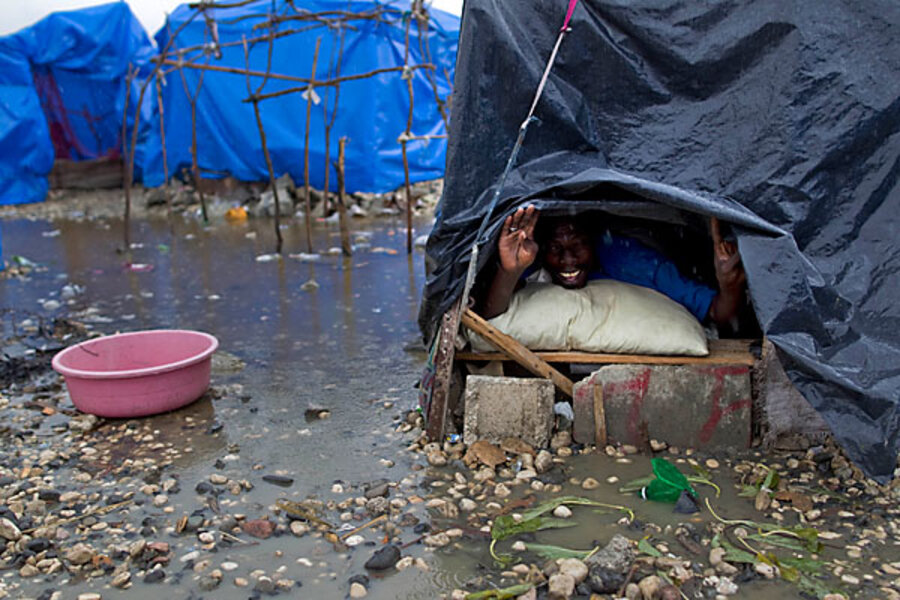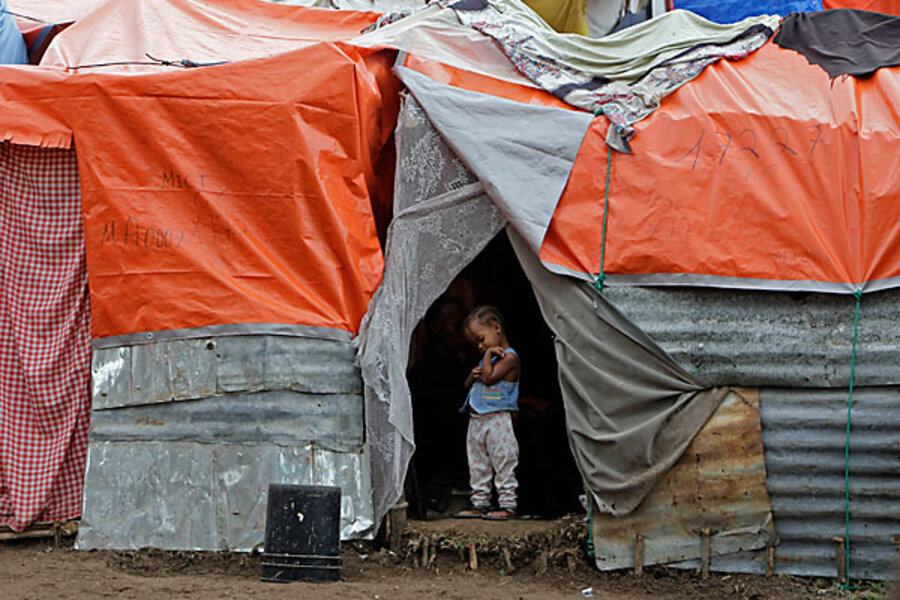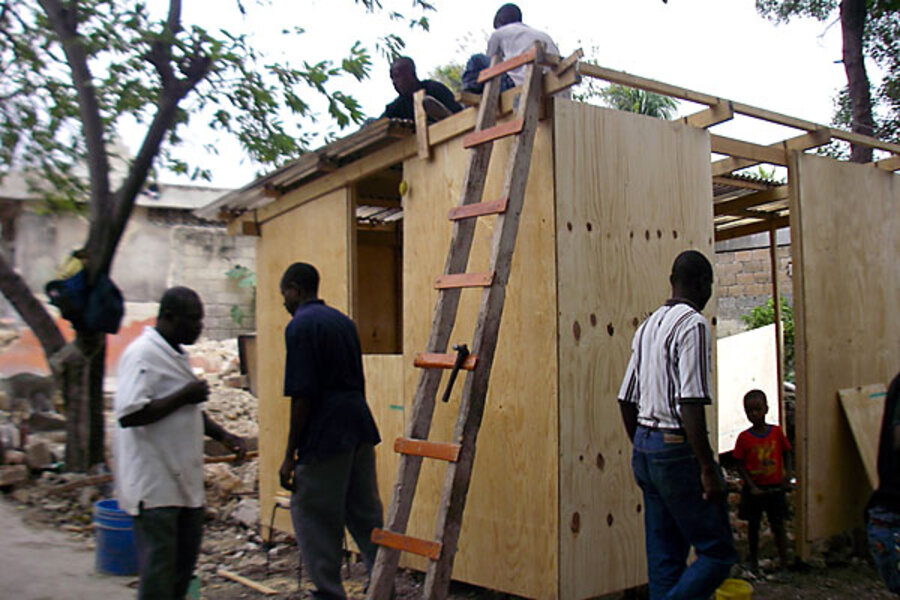Haiti races to house post-quake homeless before the rainy season
Loading...
| Port-au-Prince, Haiti
When Aleksandre Radosavcec landed in Haiti just two weeks after the Jan. 12 earthquake, he immediately headed to ground zero. As a longtime disaster relief specialist with Danish People's Aid (DPA), he knew the drill for such emergencies. Within days he'd set up a small office, rented a cellar for living space, and begun to assess what needed to be done, especially before Haiti's rainy season begins in April.
Together with his partner, Erik Norremark, he presented a temporary housing design to the Shelter Cluster, a conglomerate of dozens of aid agencies coordinating efforts to provide housing to more than 1 million Haitians left homeless by the quake.
The Cluster chose the Danes' 14-square-meter design as its first temporary shelter prototype.
"I'm from Legoland" says Mr. Norremark. "This is a Lego-type assembly kit."
This means that instead of measuring and cutting on site, materials can be precut from molds in workshops staffed by trained mobile construction teams. In only two days, parts can be assembled into an elevated hurricane- and earthquake-proof home that will last three years, minimum.
But if the Legoland solution sounds too simple for Haiti's housing problems, it is.
When April rains begin
As this disaster-stricken country hiccups from emergency to transitional housing, the government needs 40,000 dwellings for 200,000 people currently in flood- or mudslide-prone areas or in the most congested tent cities. Even the government admits it will be nearly impossible to meet its goal by the time the rainy season starts in earnest April 1. Already, rains have drenched people in makeshift tents and homes have slid down hillsides.
The Commission of Damage Assessment, Temporary Shelter, Demolition and Reconstruction, which is in charge of (among other things) relocation, has a complex plan of charts, maps, and spreadsheets to accomplish its task. As opposed to DPA, which is building its homes on the site of destroyed ones, the government needs land, and lots of it.
The capital, Port-au-Prince, where most of the homeless live, has neither appropriate nor available space for massive relocation. The government has identified several sites totaling 6 million square meters (some 1,500 acres) for relocating people to the perimeters of the capital. But because it only owns 50 of the 600 hectares, it is currently in negotiations with private landowners who, in theory, are amenable to making a deal.
But that requires beaucoup de bucks. Already cash poor, the government lost 80 percent of its revenue and 30,000 commercial structures after the quake, say government officials. It's hoping that the international community and lending institutions will bridge its financial gap. The commission estimates that relocation from an emergency to transitional shelter will cost $367 per person. "We have to have cash in hand within the next six weeks," says commission member Gerald-Emile Brun, an architect with 35 years experience. "Otherwise people are going to drown."
Mr. Brun hopes that at least 80 percent of the cost of acquiring land will be carried by the international community and lending institutions, and that eventually the US will cover the rest. Then the land has to be prepared and services provided. This could take weeks, months, even years.
DPA says it's working to get residents in shelters that conform to international standards: 30 square meters per person, 1.5 meters between tents or houses. That is more than the three square meters of personal space many people in tent camps currently have.
Nongovernmental organizations (NGOs) will provide about 100,000 shelters. But how many homes can be built, and how quickly they can get them up, depends on the materials available.
According to Mark South, Shelter Cluster spokesman, the current best estimate is that 50 percent of the materials for these 100,000 homes will be sourced by joint procurement – the large-scale purchase of materials. But the concrete details of these shipments have yet to be nailed down.
How much will a shelter cost?
Without these specifics, it's hard for NGOs to plan or to fundraise. Habitat for Humanity, for example, says it is impossible to tell donors how much a shelter will cost because the variables are just too great. "Our biggest challenge has been lack of clarity about who are the decisionmakers," says Kip Scheidler, Habitat's senior director for global disaster response. "Not knowing that makes everything more complicated than it should be in an already complicated situation."
Officials in both the government and aid agencies admit that mistakes have been made that could cost lives in the weeks to come.
"We're working as fast as we can," says Mr. South, the Cluster spokesman, "but it's a massive operation of coordination and we're up against it. We want to be able to provide as best we can without cutting corners that will put people at a long-term risk."
In the meantime, DPA will continue to work as fast as it can until its money runs out. If the joint procurement comes through, they will be able to build twice as many shelters.
"We've got no fancy vehicles or big offices," Mr. Radosavcec says. "Just two guys hoping to train as many teams as possible to build homes."







